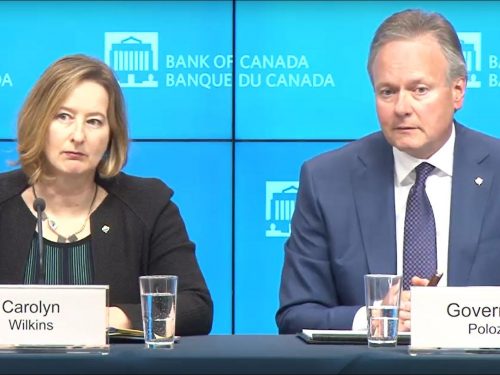Canada’s financial system remains resilient as vulnerabilities show further signs of easing
High household indebtedness and housing market imbalances remain the most important vulnerabilities identified by the Bank of Canada in its Financial System Review (FSR), published today. While these vulnerabilities remain elevated, policy measures continue to improve the resilience of the financial system.
The vulnerability related to high household indebtedness has begun to ease. Incomes continue to rise and household credit growth has slowed due to higher interest rates and policy measures aimed at mortgage financing and housing. Because of the sheer size of the stock of debt, however, this vulnerability will persist for some time.
House price growth has also slowed, led by a decline in the Greater Toronto Area. The condominium markets in the Toronto and Vancouver areas remain strong, with some evidence of speculative activity. Overall, the vulnerability associated with housing market imbalances has shown signs of lessening but remains elevated.
“The two main vulnerabilities we have been watching closely are showing continued signs of easing, which is encouraging,” said Governor Stephen S. Poloz. “Combined, the impact of higher interest rates and the changes to the mortgage guidelines have reduced credit growth and improved the quality of new lending.”
The third main vulnerability highlighted in the FSR concerns cyber threats to an interconnected financial system. The Bank has been working with the major banks and Payments Canada to ensure Canada’s key payment systems are able to recover quickly should a cyber attack be successful. “Continued collaboration and a greater pooling of resources are needed to increase the overall resilience of the financial system,” said the Governor.
The key risk scenarios that apply to these vulnerabilities are similar to those in the November 2017 FSR, as is the level of risk that any of these scenarios might materialize. The most important risk is a severe nationwide recession leading to a rise in financial stress. Other key risks are a house price correction in overheated markets and a sharp increase in long-term interest rates driven by higher global risk premiums.
The Bank is also modernizing the way it communicates and engages with Canadians on financial stability issues. “This autumn, we will launch a new financial system hub on our website, where we will publish timely and accessible research and analysis throughout the year,” said Senior Deputy Governor Carolyn A. Wilkins. As well, a member of Governing Council will deliver a speech each autumn to provide an update on the Bank’s assessment of the vulnerabilities and risks to the financial system. The FSR will now be published once a year, in June, and the quarterly Monetary Policy Report will include more in-depth discussion of relevant financial system issues, as warranted.
This issue of the FSR also features three reports written by Bank of Canada staff:
- Establishing a Resolution Regime for Canada’s Financial Market Infrastructures
- Covered Bonds as a Source of Funding for Banks’ Mortgage Portfolios
- The Bank of Canada’s Financial System Survey


